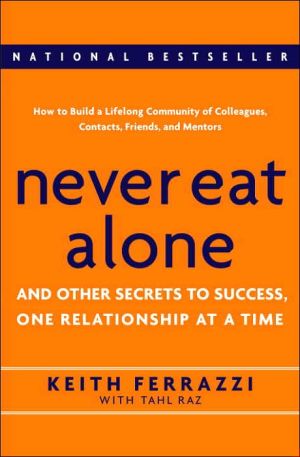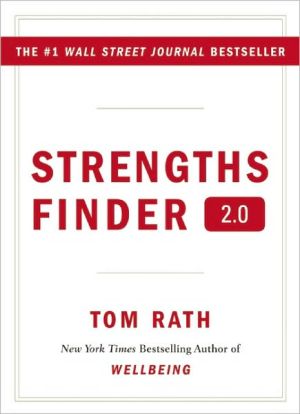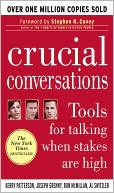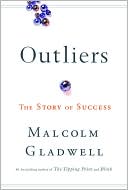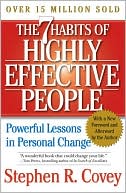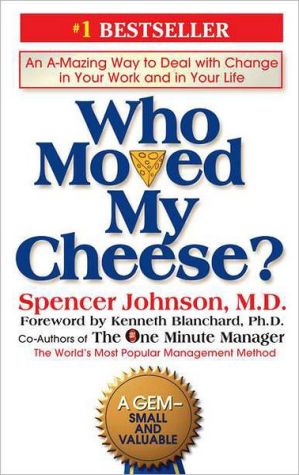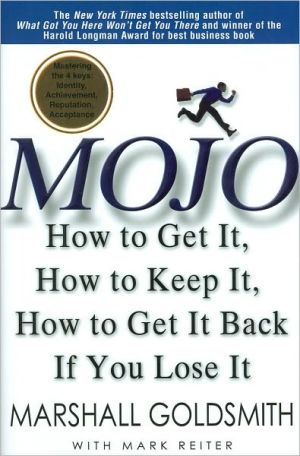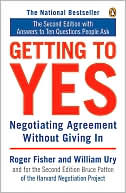Never Eat Alone: And Other Secrets to Success, One Relationship at a Time
Do you want to get ahead in life?\ Climb the ladder to personal success?\ The secret, master networker Keith Ferrazzi claims, is in reaching out to other people. As Ferrazzi discovered early in life, what distinguishes highly successful people from everyone else is the way they use the power of relationships—so that everyone wins.\ In Never Eat Alone, Ferrazzi lays out the specific steps—and inner mindset—he uses to reach out to connect with the thousands of colleagues, friends, and...
Search in google:
Do you want to get ahead in life? Climb the ladder to personal success? The secret, master networker Keith Ferrazzi claims, is in reaching out to other people. As Ferrazzi discovered early in life, what distinguishes highly successful people from everyone else is the way they use the power of relationships-so that everyone wins. In Never Eat Alone, Ferrazzi lays out the specific steps-and inner mindset-he uses to reach out to connect with the thousands of colleagues, friends, and associates on his Rolodex, people he has helped and who have helped him. The son of a small-town steelworker and a cleaning lady, Ferrazzi first used his remarkable ability to connect with others to pave the way to a scholarship at Yale, a Harvard MBA, and several top executive posts. Not yet out of his thirties, he developed a network of relationships that stretched from Washington's corridors of power to Hollywood's A-list, leading to him being named one of Crain's 40 Under 40 and selected as a Global Leader for Tomorrow by the Davos World Economic Forum. Ferrazzi's form of connecting to the world around him is based on generosity, helping friends connect with other friends. Ferrazzi distinguishes genuine relationship-building from the crude, desperate glad-handling usually associated with "networking." He then distills his system of reaching out to people into practical, proven principles. Among them: Don't keep score: It's never simply about getting what you want. It's about getting what you want and making sure that the people who are important to you get what they want, too. "Ping" constantly: The Ins and Outs of reaching out to those in your circle of contacts all the time-not just when you need something. Never eat alone: The dynamics of status are the same whether you're working at a corporation or attending a society event- "invisibility" is a fate worse than failure. In the course of the book, Ferrazzi outlines the timeless strategies shared by the world's most connected individuals, from Katherine Graham to Bill Clinton, Vernon Jordan to the Dalai Lama. Chock full of specific advice on handling rejection, getting past gatekeepers, becoming a "conference commando," and more, Never Eat Alone is destined to take its place alongside How to Win Friends and Influence People as an inspirational classic. Publishers Weekly The youngest partner in Deloitte Consulting's history and founder of the consulting company Ferrazzi Greenlight, the author quickly aims in this useful volume to distinguish his networking techniques from generic handshakes and business cards tossed like confetti. At conferences, Ferrazzi practices what he calls the "deep bump"-a "fast and meaningful" slice of intimacy that reveals his uniqueness to interlocutors and quickly forges the kind of emotional connection through which trust, and lots of business, can soon follow. That bump distinguishes this book from so many others that stress networking; writing with Fortune Small Business editor Raz, Ferrazzi creates a real relationship with readers. Ferrazzi may overstate his case somewhat when he says, "People who instinctively establish a strong network of relationships have always created great businesses," but his clear and well-articulated steps for getting access, getting close and staying close make for a substantial leg up. Each of 31 short chapters highlights a specific technique or concept, from "Warming the Cold Call" and "Managing the Gatekeeper" to following up, making small talk, "pinging" (or sending "quick, casual" greetings) and defining oneself to the point where one's missives become "the e-mail you always read because of who it's from." In addition to variations on the theme of hard work, Ferrazzi offers counterintuitive perspectives that ring true: "vulnerability... is one of the most underappreciated assets in business today"; "too many people confuse secrecy with importance." No one will confuse this book with its competitors. (On sale Feb. 22) Copyright 2005 Reed Business Information.
Chapter One\ Becoming a Member of the Club\ Relationships are all there is. Everything in the universe only exists because it is in relationship to everything else. Nothing exists in isolation. We have to stop pretending we are individuals that can go it alone.\ –Margaret Wheatley\ How on earth did I get in here?” I kept asking myself in those early days as an overwhelmed first-year student at Harvard Business School.\ There wasn’t a single accounting or finance class in my background. Looking around me, I saw ruthlessly focused young men and women who had undergraduate degrees in business. They’d gone on to crunch numbers or analyze spreadsheets in the finest firms on Wall Street. Most were from wealthy families and had pedigrees and legacies and Roman numerals in their names. Sure, I was intimidated.\ How was a guy like me from a working-class family, with a liberal arts degree and a couple years at a traditional manufacturing company, going to compete with purebreds from McKinsey and Goldman Sachs who, from my perspective, seemed as if they’d been computing business data in their cribs?\ It was a defining moment in my career, and in my life.\ I was a country boy from southwestern Pennsylvania, raised in a small, hardworking steel and coal town outside of Latrobe called Youngstown. Our region was so rural you couldn’t see another house from the porch of our modest home. My father worked in the local steel mill; on weekends he’d do construction. My mother cleaned the homes of the doctors and lawyers in a nearby town. My brother escaped small-town life by way of the army; my sister got married in high school and moved out when I was a toddler.\ At HBS, all the insecurities of my youth came rushing back. You see, although we didn’t have much money, my dad and mom were set on giving me the kind of opportunities my brother and sister (from my mom’s previous marriage) never got. My parents pushed me and sacrificed everything to get me the kind of education that only the well-to-do kids in our town could afford. The memories rushed back to those days when my mother would pick me up in our beat-up blue Nova at the bus stop of the private elementary school I attended, while the other children ducked into limos and BMWs. I was teased mercilessly about our car and my polyester clothes and fake Docksiders–reminded daily of my station in life.\ The experience was a godsend in many ways, toughening my resolve and fueling my drive to succeed. It made clear to me there was a hard line between the haves and the have-nots. It made me angry to be poor. I felt excluded from what I saw as the old boys’ network. On the other hand, all those feelings pushed me to work harder than everyone around me.\ Hard work, I reassured myself, was one of the ways I’d beaten the odds and gotten into Harvard Business School. But there was something else that separated me from the rest of my class and gave me an advantage. I seemed to have learned something long before I arrived in Cambridge that it seemed many of my peers had not.\ As a kid, I caddied at the local country club for the homeowners and their children living in the wealthy town next to mine. It made me think often and hard about those who succeed and those who don’t. I made an observation in those days that would alter the way I viewed the world.\ During those long stretches on the links, as I carried their bags, I watched how the people who had reached professional heights unknown to my father and mother helped each other. They found one another jobs, they invested time and money in one another’s ideas, and they made sure their kids got help getting into the best schools, got the right internships, and ultimately got the best jobs.\ Before my eyes, I saw proof that success breeds success and, indeed, the rich do get richer. Their web of friends and associates was the most potent club the people I caddied for had in their bags. Poverty, I realized, wasn’t only a lack of financial resources; it was isolation from the kind of people that could help you make more of yourself.\ I came to believe that in some very specific ways life, like golf, is a game, and that the people who know the rules, and know them well, play it best and succeed. And the rule in life that has unprecedented power is that the individual who knows the right people, for the right reasons, and utilizes the power of these relationships, can become a member of the “club,” whether he started out as a caddie or not.\ This realization came with some empowering implications. To achieve your goals in life, I realized, it matters less how smart you are, how much innate talent you’re born with, or even, most eye-opening to me, where you came from and how much you started out with. Sure all these are important, but they mean little if you don’t understand one thing: You can’t get there alone. In fact, you can’t get very far at all.\ Fortunately, I was hungry to make something of myself (and, frankly, even more terrified that I’d amount to nothing). Otherwise, perhaps I would have just stood by and watched like my friends in the caddy yard.\ I first began to learn about the incredible power of relationships from Mrs. Poland. Carol Poland was married to the owner of the big lumberyard in our town, and her son, Brett, who was my age, was my friend. They went to our church. At the time, I probably wanted to be Brett (great athlete, rich, all the girls falling over him).\ At the club, I was Mrs. Poland’s caddie. I was the only one who cared enough, ironically, to hide her cigarettes. I busted my behind to help her win every tournament. I’d walk the course the morning before to see where the tough pin placements were. I’d test the speed of the greens. Mrs. Poland started racking up wins left and right. Every ladies day, I did such a great job that she would brag about me to her friends. Soon, others requested me.\ I’d caddie thirty-six holes a day if I could get the work, and I made sure I treated the club caddie-master as if he were a king. My first year, I won the annual caddie award, which gave me the chance to caddie for Arnold Palmer when he came to play on his hometown course. Arnie started out as a caddie himself at the Latrobe Country Club and went on to own the club as an adult. I looked up to him as a role model. He was living proof that success in golf, and in life, had nothing to do with class. It was about access (yes, and talent, at least in his case). Some gained access through birth or money. Some were fantastic at what they did, like Arnold Palmer. My edge, I knew, was my initiative and drive. Arnie was inspirational proof that your past need not be prologue to your future.\ For years I was a de facto member of the Poland family, splitting holidays with them and hanging out at their house nearly every day. Brett and I were inseparable, and I loved his family like my own. Mrs. Poland made sure I got to know everyone in the club that could help me, and if she saw me slacking, I’d hear it from her. I helped her on the golf course, and she, in appreciation of my efforts and the care I bestowed upon her, helped me in life. She provided me with a simple but profound lesson about the power of generosity. When you help others, they often help you. Reciprocity is the gussied-up word people use later in life to describe this ageless principle. I just knew the word as “care.” We cared for each other, so we went out of our way to do nice things.\ Because of those days, and specifically that lesson, I came to realize that first semester at business school that Harvard’s hypercompetitive, individualistic students had it all wrong. Success in any field, but especially in business, is about working with people, not against them. No tabulation of dollars and cents can account for one immutable fact: Business is a human enterprise, driven and determined by people.\ It wasn’t too far into my second semester before I started jokingly reassuring myself, “How on earth did all these other people get in here?”\ What many of my fellow students lacked, I discovered, were the skills and strategies that are associated with fostering and building relationships. In America, and especially in business, we’re brought up to cherish John Wayne individualism. People who consciously court others to become involved in their lives are seen as schmoozers, brown-nosers, smarmy sycophants.\ Over the years, I learned that the outrageous number of misperceptions clouding those who are active relationship-builders is equaled only by the misperceptions of how relationship-building is done properly. What I saw on the golf course–friends helping friends and families helping families they cared about–had nothing to do with manipulation or quid pro quo. Rarely was there any running tally of who did what for whom, or strategies concocted in which you give just so you could get.\ Over time, I came to see reaching out to people as a way to make a difference in people’s lives as well as a way to explore and learn and enrich my own; it became the conscious construction of my life’s path. Once I saw my networking efforts in this light, I gave myself permission to practice it with abandon in every part of my professional and personal life. I didn’t think of it as cold and impersonal, the way I thought of “networking.” I was, instead, connecting–sharing my knowledge and resources, time and energy, friends and associates, and empathy and compassion in a continual effort to provide value to others, while coincidentally increasing my own. Like business itself, being a connector is not about managing transactions, but about managing relationships.\ People who instinctively establish a strong network of relationships have always created great businesses. If you strip business down to its basics, it’s still about people selling things to other people. That idea can get lost in the tremendous hubbub the business world perpetually stirs up around everything from brands and technology to design and price considerations in an endless search for the ultimate competitive advantage. But ask any accomplished CEO or entrepreneur or professional how they achieved their success, and I guarantee you’ll hear very little business jargon. What you will mostly hear about are the people who helped pave their way, if they are being honest and not too caught up in their own success.\ After two decades of successfully applying the power of relationships in my own life and career, I’ve come to believe that connecting is one of the most important business–and life–skill sets you’ll ever learn. Why? Because, flat out, people do business with people they know and like. Careers–in every imaginable field–work the same way. Even our overall well-being and sense of happiness, as a library’s worth of research has shown, is dictated in large part by the support and guidance and love we get from the community we build for ourselves.\ It took me a while to figure out exactly how to go about connecting with others. But I knew for certain that whether I wanted to become president of the United States or the president of a local PTA, there were a lot of other people whose help I would need along the way.\ Self-Help: A Misnomer\ How do you turn an aspiring contact into a friend? How can you get other people to become emotionally invested in your advancement? Why are there some lucky schmos who always leave business conferences with months’ worth of lunch dates and a dozen potential new associates, while others leave with only indigestion? Where are the places you go to meet the kind of people who could most impact your life?\ From my earliest days growing up in Latrobe, I found myself absorbing wisdom and advice from every source imaginable–friends, books, neighbors, teachers, family. My thirst to reach out was almost unquenchable. But in business, I found nothing came close to the impact of mentors. At every stage in my career, I sought out the most successful people around me and asked for their help and guidance.\ I first learned the value of mentors from a local lawyer named George Love. He and the town’s stockbroker, Walt Saling, took me under their wings. I was riveted by their stories of professional life and their nuggets of street-smart wisdom. My ambitions were sown in the fertile soil of George and Walt’s rambling business escapades, and ever since, I’ve been on the lookout for others who could teach or inspire me. Later in life, as I rubbed shoulders with business leaders, store owners, politicians, and movers and shakers of all stripes, I started to gain a sense of how our country’s most successful people reach out to others, and how they invite those people’s help in accomplishing their goals.\ I learned that real networking was about finding ways to make other people more successful. It was about working hard to give more than you get. And I came to believe that there was a litany of tough-minded principles that made this softhearted philosophy possible.\ These principles would ultimately help me achieve things I didn’t think I was capable of. They would lead me to opportunities otherwise hidden to a person of my upbringing, and they’d come to my aid when I failed, as we all do on occasion. That aid was never in more dire need than during my first job out of business school at Deloitte & Touche Consulting.\ By conventional standards, I was an awful entry-level consultant. Put me in front of a spreadsheet and my eyes glaze over, which is what happened when I found myself on my first project, huddled in a cramped windowless room in the middle of suburbia, files stretching from floor to ceiling, poring over a sea of data with a few other first-year consultants. I tried; I really did. But I just couldn’t. I was convinced boredom that bad was lethal.\ I was clearly well on my way to getting fired or quitting.\ Luckily, I had already applied some of the very rules of networking that I was still in the process of learning. In my spare time, when I wasn’t painfully attempting to analyze some data-ridden worksheet, I reached out to ex-classmates, professors, old bosses, and anyone who might stand to benefit from a relationship with Deloitte. I spent my weekends giving speeches at small conferences around the country on a variety of subjects I had learned at Harvard mostly under the tutelage of Len Schlessinger (to whom I owe my speaking style today). All this in an attempt to drum up both business and buzz for my new company. I had mentors throughout the organization, including the CEO, Pat Loconto.
\ From Barnes & NobleNetworking: The term conjures up pushy executives whose goal is getting invited to "connected" social events to shmooze with VIPs and hand out business cards. So we found this book's take on networking frankly refreshing: Help others, with the understanding that they, in turn, will help you. Eschewing naked self-interest, Keith Ferrazzi bases his proven networking tips on sensible acts of kindness, camaraderie, and generosity.\ \ \ \ \ Publishers WeeklyThe youngest partner in Deloitte Consulting's history and founder of the consulting company Ferrazzi Greenlight, the author quickly aims in this useful volume to distinguish his networking techniques from generic handshakes and business cards tossed like confetti. At conferences, Ferrazzi practices what he calls the "deep bump"-a "fast and meaningful" slice of intimacy that reveals his uniqueness to interlocutors and quickly forges the kind of emotional connection through which trust, and lots of business, can soon follow. That bump distinguishes this book from so many others that stress networking; writing with Fortune Small Business editor Raz, Ferrazzi creates a real relationship with readers. Ferrazzi may overstate his case somewhat when he says, "People who instinctively establish a strong network of relationships have always created great businesses," but his clear and well-articulated steps for getting access, getting close and staying close make for a substantial leg up. Each of 31 short chapters highlights a specific technique or concept, from "Warming the Cold Call" and "Managing the Gatekeeper" to following up, making small talk, "pinging" (or sending "quick, casual" greetings) and defining oneself to the point where one's missives become "the e-mail you always read because of who it's from." In addition to variations on the theme of hard work, Ferrazzi offers counterintuitive perspectives that ring true: "vulnerability... is one of the most underappreciated assets in business today"; "too many people confuse secrecy with importance." No one will confuse this book with its competitors. (On sale Feb. 22) Copyright 2005 Reed Business Information.\ \ \ Soundview Executive Book SummariesIn Never Eat Alone, marketing and sales consultant Keith Ferrazzi lays out the specific steps, and inner mind-set, that he uses to connect with thousands of colleagues, friends and associates.\ The secret to accomplishing personal career objectives, Ferrazzi tells us, can be found in reaching out to other people. What distinguishes highly successful people from everyone else is the way they use the power of relationships so that everyone wins.\ Ferrazzi’s advice is based on generosity and helping friends connect to other friends and he offers specific tips on handling rejection, getting past the gatekeepers, becoming a "conference commando," and building and broadcasting your personal brand.\ Reaching out to people is a way to make a difference in their lives as well as a way to explore, learn and enrich your own, Ferrazzi explains. Building a web of relationships isn’t the only thing you need to be successful. But building a career, and a life, with the help and support of friends, family and associates has many virtues.\ The Mind-Set\ Knowing what you want will inform you how to build relationships to achieve your goals. The author makes two recommendations:\ \ Put your goals on paper. Write down what you want to achieve in 10 years, three years, one year, and 60 days to work backward from great visions to the specific steps you must start taking immediately to get there.\ Think about who can help you achieve those goals. Write both the names of people and types of people you need to know for your success. Now, there are two questions you ask and answer for each of your target contacts: How can you reach them? And what can you offer them, or how can you contribute to their success, too?\ \ \ \ \ The Skill Set\ Ferrazzi outlines the skill set that is needed to build relationships:\ \ Do your homework. Before you meet someone new, get information about that person. The more knowledge you have, the easier it will be to connect, bond and impress.\ Take names. Maintain an electronic record of all the people you know and add to it whenever you meet new people or whenever you learn about people you want to meet.\ Warm up the cold call. Think of meeting new people as a challenge and an opportunity. Find a mutual friend to introduce you. Show you know their problems and that you have solutions. Talk a little and say a lot. Offer a compromise. Ask for more than you want at first, so you can later settle for something that’s still desirable.\ Manage the gatekeeper artfully. Make the gatekeepers your allies.\ Never eat alone. Invisibility is far worse than failure.\ Share your passions. Get involved in activities you enjoy and causes you believe in, and invite others to join you.\ Follow up or fail. Give yourself 12-24 hours to follow up. Focus on what you might be able to do for them.\ Be a Conference Commando. Know your targets ahead of time, strike early, work the breaks, skip the small talk as quickly as possible, and remember that you’re there to meet the attendees, not the speakers.\ Connect with connectors. Super-connectors such as restaurateurs, headhunters, politicians and journalists should be the cornerstones of any flourishing network.\ Expand your circle. A great method for expanding your circle is sharing networks with a friend.\ The Art of Small Talk. We all have what it takes to charm everyone around us. But having it and knowing how to work it- that’s the difference between going though life in the shadows and commanding center stage. Charm is simply a matter of being yourself. Your uniqueness is your power.\ \ \ \ \ Ferrazzi tells us there’s never been a better time to reach out and connect than right now. The more everyone becomes connected to everyone else, the quicker and smoother our ascent toward our goals will be. Creativity begets more creativity, money begets more money, knowledge begets more knowledge, and success begets even more success.\ Ferrazzi concludes, "Just remember: You can’t get there alone. We’re all in this together." Copyright © 2006 Soundview Executive Book Summaries\ \ —Soundview Summary\ \
